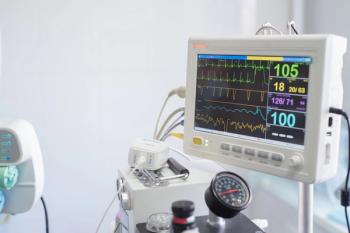
- Vol. 64 No. 05
- Volume 64
- Issue 5
Zika news, cautions and precautions for 2018
Providers should be discussing Zika with their patients and educating them about preventive strategies as well as offering screening and testing to relevant populations of pregnant women.
In 2015, news began to surface about an epidemic of neonatal microcephaly in Brazil, eventually traced to infection with Zika Virus (ZIKV), an arthropod-borne flavivirus similar to Dengue and Chikungunya. Zika was identified back in 1947, but the 2015 outbreak was the first to gain international attention. Cases were soon reported throughout much of Central and South America, and eventually a link was made to a 2013 outbreak in French Polynesia, in which thousands of people were infected.1-3 Eventually, researchers assembled sufficient data to characterize the Congenital Zika Syndrome, a constellation of neurologic and physical findings attributed to congenital infection with ZIKV (Table 1).4
Unlike other flaviviruses, Zika was noted to cause only mild illness in infected adults, with most adults (80%) showing no symptoms at all, and the remaining 20% describing a mild syndrome consisting of fever, conjunctivitis, rash, and mild arthralgias. Zika has also been associated with development of Guillain-Barré syndrome in adults, which can be life-threatening. Zika is primarily transmitted between adults through an arthropod vector, the Aedes aegypti mosquito, although other Aedes species have tested positive for virus particles. The virus can also be transmitted sexually; it can survive in vaginal secretions for up to 14 days and in semen for up to 188 days after onset of illness. It has also been detected in other body fluids including urine, saliva, and tears along with blood.5 Transplacental passage is the primary mode of perinatal transmission.
Current epidemiology
A recent publication provided information with regard to incidence of infection and timing during pregnancy. Hoen et al followed 555 fetuses and infants born to women with symptomatic, polymerase chain reaction-confirmed ZIKV infection. They found a rate of microcephaly of 5.8%, and an overall birth defect rate of 7.0%. Neurologic and ocular defects were more common in cases in which ZIKV infection took place in the first trimester (12.7%) compared to second- or third- trimester infections (3.6% and 5.3%, respectively).6
Although media attention on Zika virus has dwindled over the past year, the majority of countries in South and Central America continue to report active transmission of virus, along with Southeast Asia, India and Pakistan, much of Africa, and the Pacific Islands. Therefore, it is important for obstetric care providers to query their patients at each visit about travel history or sexual partners’ travel and symptoms in those exposed or potentially exposed, and discuss options for screening in relevant populations. This is particularly important with summer approaching, and increased travel to areas with possible exposure. As with any disease process, prevention is key; patients who are not pregnant but are planning to become pregnant should be advised to avoid these areas with active transmission and avoid unprotected intercourse with anyone who has traveled to an area of active transmission within the last 6 months. If travel is unavoidable, using permethrin, DEET, and other mosquito-repellent behaviors such as remaining indoors with windows shut, wearing long sleeves, and removing sources of standing water are good advice.
How and when to screen
Screening algorithms for ZIKV are complex; providers should refer to the Centers for Disease Control and Prevention’s website for detailed information.5 Briefly, at this time, recommendations for testing are exclusively related to pregnant patients-there is no guidance for screening of non-pregnant women or their partners. The algorithms begin with a positive exposure, then symptoms. If patients are asymptomatic, then screening is controversial, due to the low prevalence and higher likelihood of false-positive results. However, realizing that 80% of infected individuals are asymptomatic, the guideline is a bit permissive and leaves room for discussion of appropriate testing modalities with individual patients. Another important factor in screening and diagnostic testing is timing of exposure. If within 12 weeks, RNA-based tests are preferred; with more remote exposure, antibody-based tests are preferred.
Choice of screening test and interpretation are difficult in part because of cross-reactivity of the existing tests with other flaviviruses (particularly Dengue and Chikungunya). This is further complicated by the fact that these viruses are also endemic in the areas where Zika is found, and carried by the same arthropod vector. Initial symptoms of those infections can easily be confused with Zika, and coinfection is frequently reported. Dengue and Chikungunya have the benefit of not being associated with neurologic injury to the fetus, and it is unclear why such a discrepancy exists when these viruses are otherwise so similar.
Conclusion
In summary, providers should be discussing Zika with their patients and educating them about preventive strategies as well as offering screening and testing to relevant populations of pregnant women.
Disclosures:
The author reports no potential conflicts of interest with regard to this article.
References:
- Baud D, Gubler DJ, Schaub B, Lanteri MC, Musso D. An update on Zika virus infection. Lancet 2017; 390:2099-109.
- Honein MA, Dawson AL, Petersen EE, et al. Birth defects among fetuses and infants of US women with evidence of possible Zika virus infection during pregnancy. JAMA 2017; 317:59-68.
- Brasil P, Pereira JP Jr, Moreira ME, et al. Zika virus infection in pregnant women in Rio de Janeiro. N Engl J Med 2016; 375:2321-34.
- Reynolds MR, Jones AM, Petersen EE, et al. Vital signs: update on Zika virus-associated birth defects and evaluation of all U.S. infants with congenital Zika virus exposure – U.S. Zika Pregnancy Registry, 2016. MMWR Morb Mortal Wkly Rep 2017; 66:366-73.
http://www.cdc.gov/zika ; accessed April 8, 2018.- Hoen B, Schaub B, Funk A, Ardillon V, Boullard M, Cabie A et al. Pregnancy Outcomes after ZIKV Infection in French Territories in the Americas. N Engl J Med 2018; 378:985-994.
Articles in this issue
over 7 years ago
Maternal Mortality Resources - Hypertensive Disordersover 7 years ago
Shoulder dystocia and brachial plexus injuryover 7 years ago
Hepatitis C in pregnancy: Screening, treatment, and managementover 7 years ago
Nitrous oxide’s revival in childbirthover 7 years ago
Risks and benefits of hormonal contraceptionNewsletter
Get the latest clinical updates, case studies, and expert commentary in obstetric and gynecologic care. Sign up now to stay informed.
















